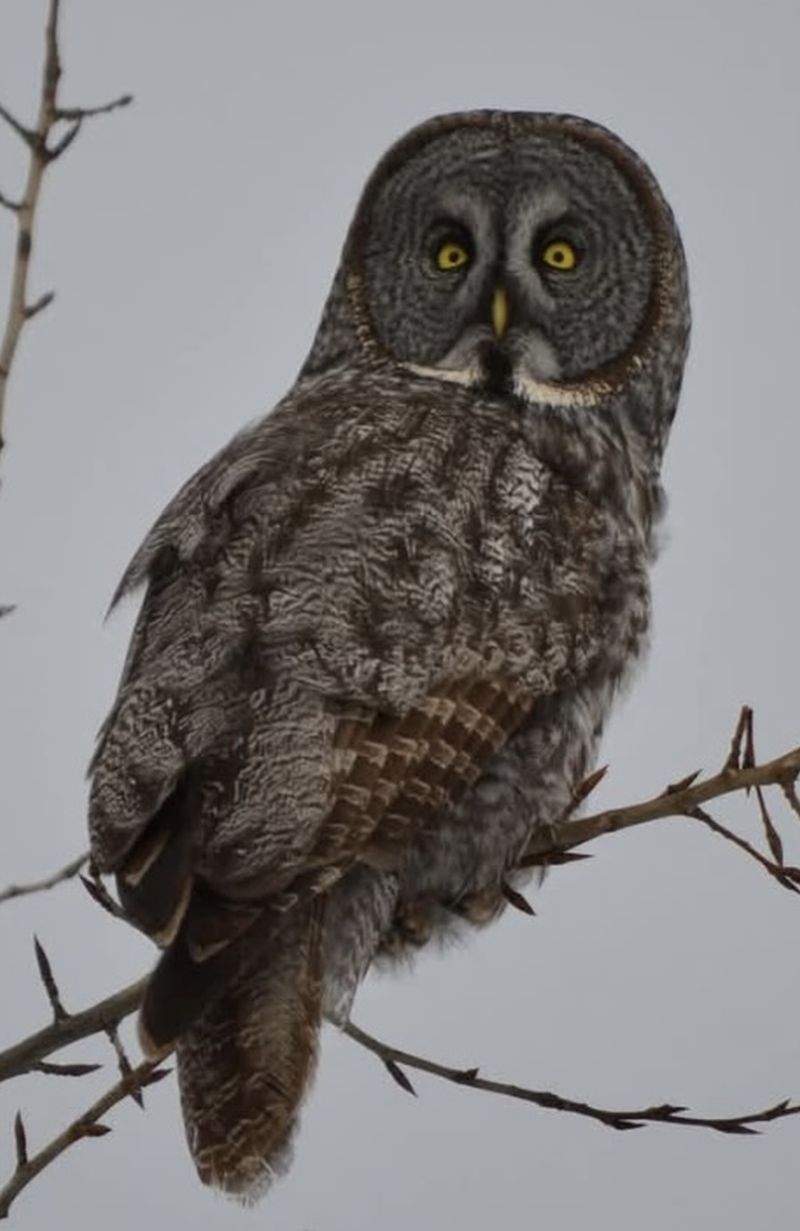By Brandie Majeau
Great Grey Owls, with their striking features and haunting presence, are one of
Nature’s most captivating birds. Known for their extraordinary size and unique
appearance, they often evoke a sense of awe. Many individuals may hear them calling
from a thicket of trees or catch a fleeting glimpse of the Great Grey as it dives from its
perch, however, the reality is that most people will go their entire lives
without ever encountering this bird in the wild. This rarity can be attributed to their
tendency to inhabit remote areas and the limited data available regarding their actual
population numbers, as indicated by federal wildlife agencies.
Great Grey Owls are not known for their communal behaviors; they do not flock
and generally do not migrate long distances. Instead, they typically remain in the same
geographical region throughout the year, breeding and wintering within the same areas.
The population of these owls is known to fluctuate significantly, largely influenced by the
cyclical changes in the populations of their primary prey.
In Canada, the preferred habitat of Great Grey Owls consists of dense, wet
evergreen forests, located in the farther northern regions. These owls are adept
hunters, often found foraging in meadows, fields and predominantly open spaces.
Human activities, particularly forest harvesting, pose the greatest threat to their
populations. The removal of crucial perch and nesting trees diminishes the quality of
their breeding habitat, making it increasingly difficult for them to thrive.
Despite their elusive nature, there has been a noticeable increase in sightings of
Great Grey Owls this year. For instance, a recent drive along a 40-kilometer stretch of
highway yielded an astonishing twelve owls perched in treetops, on fence lines and
upon power poles. This upsurge in visibility can largely be explained by the owls
irruptive behavior. Irruptive species, such as the Great Grey Owl, experience occasional
years where their numbers exceed the norm, prompting them to wander further afield
than usual.
The underlying causes of these irruption years remain somewhat elusive and are
not yet fully understood. However, several theories have emerged. One prominent
explanation revolves around food availability during the breeding season. In years when
prey populations are significantly abundant, Great Grey Owls may lay a greater number
of eggs, leading to higher survival rates among the hatchlings. This population boom
can result in increased competition for territory, forcing some owls to migrate south in
search of new winter habitats. Alternatively, irruption years may also occur due to a
shortage of food within their typical winter range, compelling them to journey further
south to hunt for sustenance.
Conducting thorough research on Great Grey Owls poses challenges due to their
preference for remote, hard to access habitats. Nevertheless, despite the difficulties in
understanding the precise dynamics of their population fluctuations, bird enthusiasts are
fortunate to enjoy the breathtaking sight of these magnificent creatures during irruption
years.


More Stories
Alberta’s Industrial Heartland
Outstanding performance at Lions Park
Former County Councillor Empowers Rural Property Owners with Wireless Security Systems